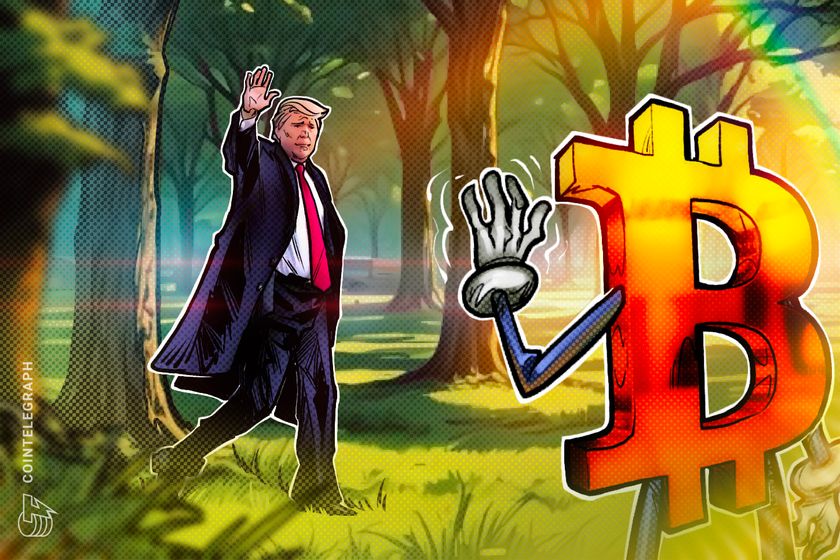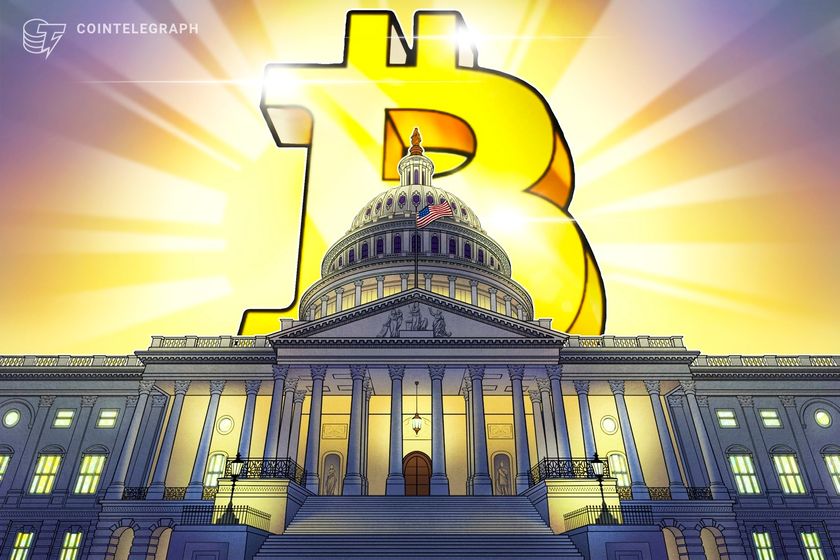

Once, long ago, cryptocurrency companies operated comfortably in the US. In that quaint, bygone era, they would often conduct funding events called “initial coin offerings,” and then use those raised funds to try to do things in the real and blockchain world.
Now, they largely do this “offshore” through foreign entities while geofencing the United States.
The effect of this change has been dramatic: Practically all major cryptocurrency issuers started in the US now include some off-shore foundation arm. These entities create significant domestic challenges. They are expensive, difficult to operate, and leave many crucial questions about governance and regulation only half answered.
Many in the industry yearn to “re-shore,” but until this year, there has been no path to do so. Now, though, that could change. New crypto-rulemaking is on the horizon, members of the Trump family have floated the idea of eliminating capital gains tax on cryptocurrency, and many US federal agencies have dropped enforcement actions against crypto firms.
For the first time in four years, the government has signaled to the cryptocurrency industry that it is open to deal. There may soon be a path to return to the US.
Crypto firms tried to comply in the US
The story of US offshoring traces back to 2017. Crypto was still young, and the Securities and Exchange Commission had taken a hands-off approach to the regulation of these new products. That all changed when the commission released a document called “The DAO Report.”
For the first time, the SEC argued that the homebrew cryptocurrency tokens that had developed since the 2009 Bitcoin white paper were actually regulated instruments called securities. This prohibition was not total — around the same time as The DAO Report’s launch, SEC Director of Corporate Finance William Hinman publicly expressed his views that Bitcoin (BTC) and Ether (ETH) were not securities.
To clarify this distinction, the commission released a framework for digital assets in 2019, which identified relevant factors to evaluate a token’s security status and noted that “the stronger their presence, the less likely the Howey test is met.” Relying on this guidance, many speculated that functional “consumptive” uses of tokens would insulate projects from securities concerns.
In parallel, complicated tax implications were crystallizing. Tax advisers reached a consensus that, unlike traditional financing instruments like simple agreements for future equity (SAFEs) or preferred equity, token sales were fully taxable events in the US. Simple agreements for future tokens (SAFTs) — contracts to issue future tokens — faced little better tax treatment, with the taxable event merely deferred until the tokens were released. This meant that a token sale by a US company would generate a massive tax liability.
Related: Trade war puts Bitcoin’s status as safe-haven asset in doubt
Projects tried in good faith to adhere to these guidelines. Lawyers extracted principles and advised clients to follow them. Some bit the bullet and paid the tax rather than contriving to create a foreign presence for a US project.
How SEC v. LBRY muddied waters
All this chugged along for a few years. The SEC brought some major enforcement actions, like its moves against Ripple and Telegram, and shut down other projects, like Diem. But many founders still believed they could operate legally in the US if they stuck to the script.
Then, events conspired to knock this uneasy equilibrium out of balance. SEC Chair Gary Gensler entered the scene in 2021, Sam Bankman-Fried blew up FTX in 2022, and an unheralded opinion from Judge Paul Barbadoro came out of the sleepy US District Court for the District of New Hampshire in a case called SEC v. LBRY.
The LBRY case is a small one, affecting what is, by all accounts, a minor crypto project, but the application of law that came out of it had a dramatic effect on the practice of cryptocurrency law and, by extension, the avenues open to founders.
Judge Barbadoro conceded that the token may have consumptive uses but held that “nothing in the case law suggests that a token with both consumptive and speculative uses cannot be sold as an investment contract.”
He went on to say that he could not “reject the SEC’s contention that LBRY offered [the token] as a security simply because some [token] purchases were made with consumptive intent.” Because of the “economic realities,” Barbadoro held that it did not matter if some “may have acquired LBC in part for consumptive purposes.”
This was devastating. The holding in LBRY is, essentially, that the factors proposed in the SEC framework largely do not matter in actual securities disputes. In LBRY, Judge Barbadoro found that the consumptive uses may be present, but the purchasers’ expectation of profit predominated.
And this, it turned out, meant that virtually any token offering might be considered a security. It meant that any evidence that a token was marketed as offering potential profit could be used against you. Even the supposition that it seemed likely that people bought it to profit could be fatal.
Regulation and hope drove firms offshore
This had a chilling effect. The LBRY case and related case law destabilized the cryptocurrency project landscape. Instead of a potential framework to work within, there remained just a single vestige of hope to operate legally in the US: Move offshore and decentralize.
Even the SEC admitted that Bitcoin and ETH were not securities because they were decentralized. Rather than having any promoter who could be responsible for their sale, they were the products of diffuse networks, attributable to no one. Projects in 2022 and 2023 were left with little option but to attempt to decentralize.
Related: Ripple celebrates SEC’s dropped appeal, but crypto rules still not set
Inevitably, the operations would begin in the United States. A few developers would create a project in a small apartment. As they found success, they wanted to fundraise — and in crypto, when you fundraise, investors demand tokens. But it’s illegal to sell tokens in the US.
So, their VC or lawyer would advise them to establish a foundation in a more favorable jurisdiction, such as the Cayman Islands, Zug in Switzerland, or Panama. That foundation could be set up to “wrap” a decentralized autonomous organization (DAO), which would have governance mechanisms tied to tokens.
Through that entity or another offshore entity, they would either sell tokens under a Regulation S exemption from US securities law or simply give them away in an airdrop.
In this way, projects hoped they could develop liquid markets and a sizable market cap, eventually achieving the “decentralization” that might allow them to operate legally as an entity in the US again.
Several crypto exchanges were incorporated in friendlier jurisdictions in 2023. Source: CoinGecko
These offshore structures didn’t just provide a compliance function — they also offered tax advantages. Because foundations have no owners, they aren’t subject to the “controlled foreign corporation” rules, under which foreign corporations get indirectly taxed in the US through their US shareholders.
Well-advised foundations also ensured they engaged in no US business activities, preserving their “offshore” status.
Presto: They became amazing tax vehicles, unburdened by direct US taxation because they operate exclusively offshore and are shielded from indirect US taxation because they are ownerless. Even better, this arrangement often gave them a veneer of legitimacy, making it difficult for regulators to pin down a single controlling party.
After the formation, the US enterprise would become a rump “labs” or “development” company that earned income through licensing software and IP to these new offshore entities — waiting for the day when everything would be different, checking the mail for Wells notices, and feeling a bit jumpy.
So, it wasn’t just regulation that drove crypto offshore — it was hope. A thousand projects wanted to find a way to operate legally in the United States, and offshore decentralization was the only path.
A slow turning
Now, that may change. With President Donald Trump in office, the hallways of 100 F Street in Washington, DC may just be thawing. SEC Commissioner Hester Peirce has taken the mantle and is leading the SEC’s Crypto Task Force.
In recent weeks, Peirce has expressed interest in offering prospective and retroactive relief for token issuers and creating a regulatory third way where token launches are treated as “non-securities” through the SEC’s Section 28 exemptive authority.
At the same time, evolutions in law are beginning to open the door for onshore operations. David Kerr of Cowrie LLP and Miles Jennings of a16z have pioneered a new corporate form, the decentralized unincorporated nonprofit association (DUNA), that may allow autonomous organizations to function as legal entities in US states like Wyoming.
Eric Trump has proposed favorable tax treatments for cryptocurrency tokens, which, though it might be a stretch, could offer a massive draw to bring assets back onshore. And without waiting on any official shifts in regulation, tax attorneys have come up with more efficient fundraising approaches, such as token warrants, to help projects navigate the existing system.
As a16z recently put it in a meeting with Commissioner Peirce’s Crypto Task Force, “If the SEC were to provide guidance on distributions, it would stem the tide of [tokens] only being issued to non-U.S. persons — a trend that is effectively offshoring ownership of blockchain technologies developed in the U.S.”
Maybe this time, they’ll listen.
Magazine: Memecoins are ded — But Solana ‘100x better’ despite revenue plunge



